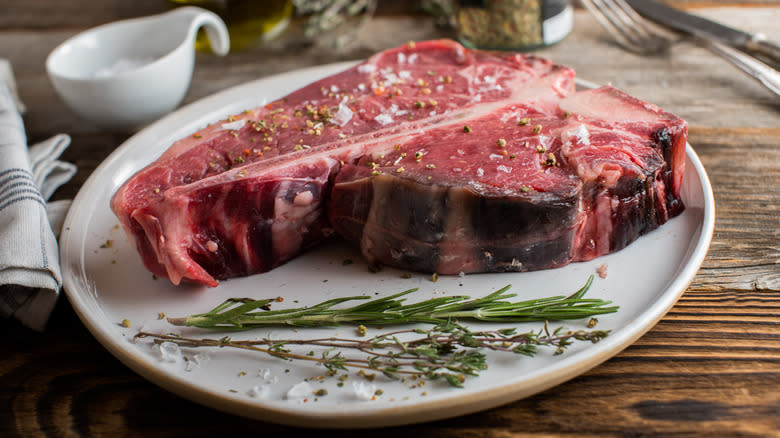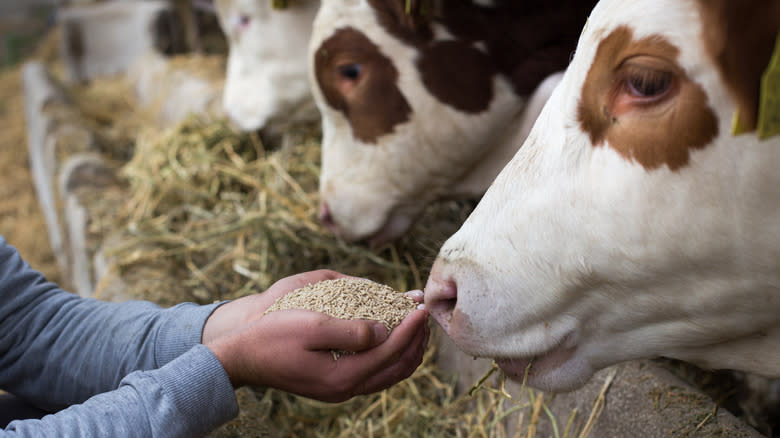Why The Flavor Of Grain-Fed Steak Might Beat Its Grass-Fed Counterpart

While beef grades are often the determining factor when selecting a steak, some people also consider their feed. Have the cows been reared on grain or grass? Whatever the cow chews presents in the beef's structure: Grain-fed steak often has more marbling, while grass-fed is leaner. Ultimately, the structure registers in the steak's flavor, and more often than not, grain-fed is the more popular choice of beef, but why is that?
Simply put, steak with more marbling is juicier. Marbling is not just white flecks that appear on your steak. It's fat, and it's more important than you realize. Those white streaks of fat melt right into your meat as it cooks, keeping it moist, tender, and flavorful. But cows don't naturally acquire that fat, especially if they have to roam vast landscapes for hours in search of green pastures. Thus, the solution is to feed them grains.
Grains, as opposed to grass, fatten the cows more effectively, and as that fat settles into their meat, it presents as marbled steak. Your typical grass-fed beef, on the other hand, is leaner. Due to grass having fewer calories than grain and the cows leading a more taxing lifestyle, they don't put on as much weight as their grain-fed counterparts. The resulting grass-fed meat has slight marbling and, therefore, less fat to convert into a juicy steak, making it the often inferior choice.
Read more: Your Guide To The Different Cuts Of Steak
Grain-Fed May Not Always Be Better Than Grass-Fed Steak

Some believe in sticking to grass-fed steak, arguing that the natural state of cattle is to eat grass — not grains. Their argument derives from the fact that grain-fed cows undergo a rearing method that requires a less humane approach, including pumping the cows with antibiotics for survival. In this case, the main concern is that low-level antibiotics administered to cattle may potentially cause harm to humans who ingest the beef. This explains the uproar regarding grain-fed beef and may be a valid argument suggesting that grain-fed can cause some alarming issues.
But, there are those like meat purveyor Pat LaFrieda who suggest that grass-fed beef isn't always best. It takes more time for grass-fed cattle to reach market weight, in addition to more labor and land. Therefore, more resources are required to rear cattle on grass, and LaFrieda believes that this approach is not as sustainability-minded as shoppers may think it to be. Still, others straddle the fence, believing neither grass-fed nor grain-fed steak is superior. Their decision is ultimately influenced by cost. Since grass-fed beef is more expensive, they'll often opt for grain-fed, or whichever meat is on discount in the meat section. From there, it's a matter of applying simple tips to grass or grain-fed varieties to cook the perfect steak every time.
Read the original article on Tasting Table

 Yahoo Lifestyle
Yahoo Lifestyle 
